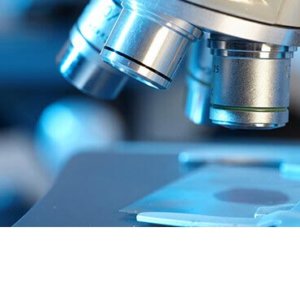- 1.1 Discuss how the process of science and scientific reasoning make biology different from other areas of study such as finance, philosophy, or music.
- 1.2 Identify the characteristics that classify something as alive and describe how living things are organized in different levels.
Biology I
Biology I is designed to cover the scope and sequence requirements of the first half of a typical two-semester biology course for science majors. The text provides comprehensive coverage of foundational research and core biology concepts through an evolutionary lens. Biology includes rich features that engage students in scientific inquiry, highlight careers in the biological sciences, and offer everyday applications. The book also includes various types of practice and homework questions that help students understand—and apply—key concepts.
Learning Objectives/
- 2.1 Describe how matter is arranged at the atomic and molecular levels.
- 2.2 Describe how the molecular structure of water gives it properties that are required for life.
- 2.3 Describe the central role that carbon plays in the structure of biological molecules.
- 3.1 Compare and contrast the reactions of dehydration synthesis and hydrolysis in the context of their roles in macromolecule synthesis.
- 3.2 Describe the roles that different classes of carbohydrates play in organisms.
- 3.3 List the four main types of lipid molecules and describe the structure and function of each one of them.
- 3.4 Summarize the characteristics that are shared by all proteins and the characteristics that differ from one protein to another.
- 3.5 Compare and contrast the structures and roles of DNA and RNA.
- 4.1 Describe the technology used to study cells and explain how it contributed to the formation of the unified cell theory.
- 4.2 Compare and contrast prokaryotic and eukaryotic cells and explain why prokaryotic cells are typically smaller in size than eukaryotic cells.
- 4.3 List and describe the functions of the major cell organelles.
- 4.4 Name the components of the endomembrane system and describe how they work together to perform the system’s functions.
- 4.5 Compare and contrast the functions of microfilaments, intermediate filaments, and microtubules.
- 4.6 Compare and contrast the functions of different types of cell junctions.
- 5.1 Describe the general structure of the fluid mosaic model of the cell membrane.
- 5.2 Describe the processes of simple and facilitated diffusion and explain why these processes are considered to be passive.
- 5.3 Describe the process of active transport and contrast it to the process of diffusion.
- 5.4 Describe the various ways in which cells move materials across the membrane in bulk.
- 6.1 Compare and contrast anabolic and catabolic pathways with special attention to energy transfer.
- 6.2 Discuss endergonic and exergonic reactions including the concepts of free energy, enthalpy, and activation energy.
- 6.3 Explain the first and second laws of thermodynamics.
- 6.4 Discuss the role of ATP in cellular mechanics and explain how hydrolysis of ATP results in energy release.
- 6.5 Describe enzyme function in various metabolic pathways and explain how enzymes are regulated.
- 7.1 Compare and contrast oxidation and reduction reactions and how they relate to ATP synthesis.
- 7.2 Describe the steps of glycolysis and indicate the steps in which energy is required and the steps in which energy is produced.
- 7.3 Compare and contrast the pathways of the citric acid cycle and glycolysis and explain how they interact with one another.
- 7.4 Describe how electrons move through the electron transport chain and explain how this movement produces and maintains a proton gradient.
- 7.5 Compare and contrast anaerobic cellular respiration and fermentation.
- 7.6 Explain how the metabolism of glycogen, proteins, and lipids interact with glucose metabolism, focusing on the metabolic pathways.
- 7.7 Analyse the mechanisms that a cell uses to regulate its metabolism and describe the consequences of failure of these mechanisms.
- 8.1 Describe the two parts of photosynthesis including the substrates and products, and the structures involved in each part.
- 8.2 Explain the role of pigments in the conversion of solar energy to chemical energy, and describe the products of this conversion.
- 8.3 Compare and contrast the light-dependent and light-independent reactions of photosynthesis, including the three basic stages of the Calvin cycle.
- 9.1 Compare and contrast the four main types of signaling found in multicellular organisms and the types of receptors and ligands present in each.
- 9.2 Summarize how signal transduction leads to the induction of a signaling pathway, and describe the role of phosphorylation.
- 9.3 Compare and contrast the signaling pathways of common cellular responses to a signal.
- 9.4 Explain how single-celled organisms use signaling to communicate with each other.
- 10.1 Compare and contrast the structure of prokaryotic and eukaryotic genomes and describe how this relates to inheritance of traits by offspring.
- 10.2 Describe the stages of the cell cycle and explain what happens to the chromosomes of the organism at each stage.
- 10.3 Analyze how the cell cycle can be controlled at three internal checkpoints; at the end of G1, at the G2/M transition, and during metaphase.
- 10.4 Compare and contrast the role of proto-oncogenes, oncogenes, and tumor suppressor genes in the development of cancer.
- 10.5 Compare and contrast the process of binary fission in prokaryotes and the process of cell division in eukaryotes./li>
- 11.1 Compare and contrast the processes of meiosis and mitosis, including the chromosomal arrangement and number produced in the final cells of each.
- 11.2 Describe the three different life-cycle types among sexual multicellular organisms and the evolutionary advantage of each of them.
- 12.1 Compare and contrast the product rule and the sum rule of probability and explain when each should be used to predict the frequency of traits in offspring.
- 12.2 Describe and create an example of a test cross to determine a dominant or recessive trait; also, describe alternative situations where this test cross would not be able to determine dominance or recessiveness (i.e. incomplete dominance).
- 12.3 Summarize Mendel’s laws of segregation and independent assortment and explain how the phenomena of linked genes and recombination affect these laws and, ultimately, the chromosomal makeup of gamete genotypes.
- 13.1 Discuss homologous recombination in terms of genetic linkage and how this phenomenon can be used to determine genetic maps.
- 13.2 Describe how chromosome inversions, translocations, and nondisjunction lead to inherited disorders.
- 14.1 Discuss the key experiments that helped identify DNA as the genetic material.
- 14.2 Describe the structure of DNA and explain how it allows for Sanger sequencing reactions to occur.
- 14.3 Using the results of the Meselson and Stahl experiments, defend the hypothesis that DNA replication is semi-conservative.
- 14.4 Describe the process of DNA replication in prokaryotes and list the functions of the proteins and enzymes in the process.
- 14.5 Compare and contrast DNA replication in eukaryotes and prokaryotes, including the roles of major enzymes involved in both the processes.
- 14.6 List the different kinds of DNA mutations and describe DNA repair mechanisms for each.
- 15.1 Explain the central dogma of protein synthesis and determine the sequence of a protein starting from a DNA sequence.
- 15.2 Describe the process of transcription in prokaryotic cells and discuss the elements involved in initiation, elongation, and termination processes.
- 15.3 Describe the process of transcription in eukaryotic cells and discuss the elements involved in initiation, elongation, and termination processes.
- 15.4 Explain how different types of RNAs are processed and describe their eventual roles in protein synthesis and the cell.
- 15.5 Discuss the process of protein synthesis and compare and contrast this process for eukaryotic and prokaryotic cells.
- 16.1 Explain the general principle of gene expression and how regulation of gene expression differs in prokaryotic and eukaryotic cells.
- 16.2 Compare the prokaryotic gene regulation mechanisms of repressor operons, activator regulators, and inducer operons.
- 16.3 Define epigenetic regulation and describe the role of histones in this process.
- 16.4 Compare and contrast the roles of enhancers and repressors in the regulation of eukaryotic gene transcription.
- 16.5 Explain how alternative splicing is a mechanism of gene regulation and discuss why it is a post-transcriptional control.
- 16.6 Describe the process and main factors involved in eukaryotic translation and discuss how post-translational control of gene expression takes place.
- 16.7 Analyze and discuss the connections between regulation of gene expression, the cell cycle, and cancer.
- 17.1 Describe different techniques of manipulating genetic material and explain how they are used in biotechnology.
- 17.2 Describe how genetic markers are used in genome mapping and explain the kinds of information the resulting maps can show.
- 17.3 Compare and contrast the three main types of whole-genome sequencing.
- 17.4 Describe how genomic techniques can be applied in a variety of different environments and what information can be gained by taking these approaches.
- 17.5 Compare and contrast the kind of information gained from studying genomes, proteomes, and metabolomes.




There are no reviews yet.